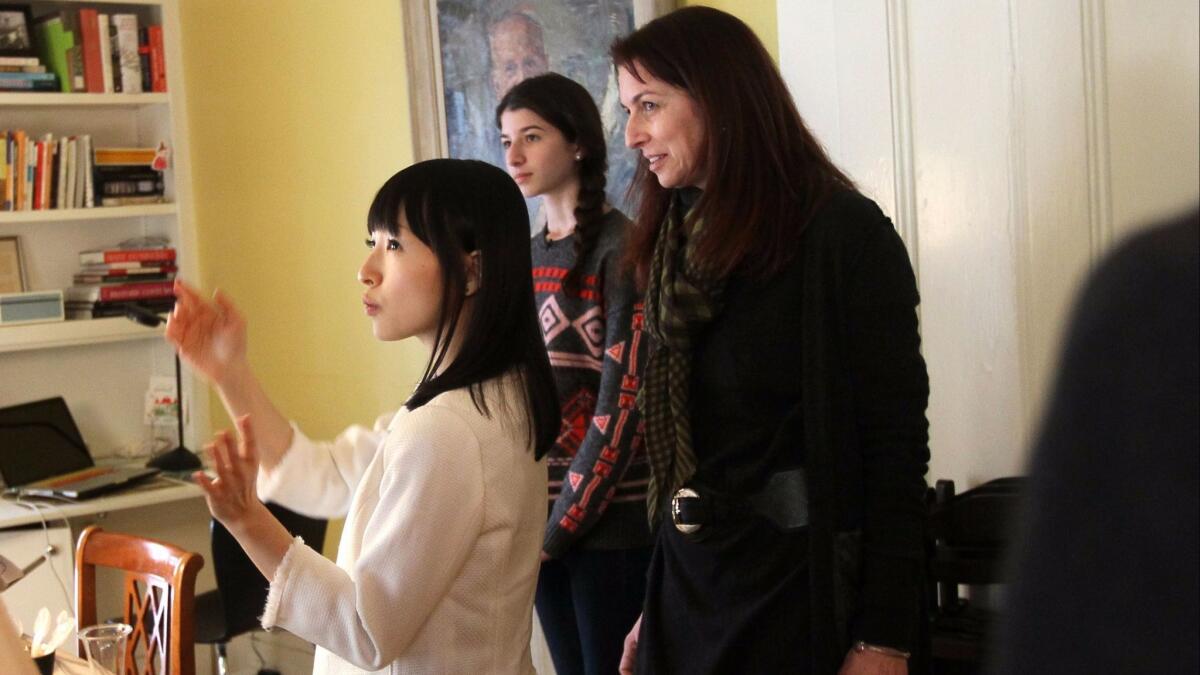Column: The world may begin to do more but consume less

There’s a book titled “Stretch: Unlock the Power of Less — and Achieve More Than You Ever Imagined” that is receiving a lot of attention lately.
Normally I wouldn’t pay much mind. I’m not a big fan of books that promise to make me better. I’m not opposed to the idea of becoming the best me I can possibly be.
The problem is that self-improvement requires work, and I’m lazy. Rather than doing more with less, I’m inclined to do less with less.
Or just less, full stop.
If achieving more took no extra effort, I would be totally on board
So when I read that “Stretch” author Scott Sonenshein, a Rice University management professor, advised that one means to unlock the power of less is to take mindless breaks from work to boost creativity, I got really excited. I happen to excel at mindless breaks.
This is something I can do, I thought.
Sonenshein’s basic argument is that our tendency to think of “more” as the key to success –– as in more money and more stuff –– is all wrong.
By always seeking more, we tend to overlook the possibilities that already exist, he says.
When we focus instead on using the resources we have, we stretch ourselves, thereby unlocking creativity and problem-solving skills.
It makes a lot of sense. And the more I’ve thought about this idea, the more I have noticed variations of the doing-more-with-less theme popping up all over.
Take the crusade being waged by neat freaks –– otherwise known as organizational experts –– who seem hellbent on getting all of us to clean our closets.
Chief among these gurus is Marie Kondo, whose best-selling “The Life-Changing Magic of Tidying Up,” has apparently convinced half the country that we should not only make do with what we already have, but that we can only achieve true self-fulfillment by throwing out half our stuff.
One could argue that the environmental movement, with its “reduce, reuse, recycle” mantra, is another facet of the do-more-with-less concept. Certainly it has gotten many of us to rethink bad habits. I thought I would miss plastic grocery bags, but it turns out I’m perfectly happy with my reusable sacks. I also think a lot more these days about ways to organize my errands to limit my driving time.
There’s nothing particularly creative about either of these little changes, but I guess if I really tried I could come up with more ways to do more with less. Perhaps I should take a mindless break to not work on it.
Mindless or not, now that I’m paying attention, I’m increasingly convinced that there’s something to this less/more paradigm.
As reported in a recent Time magazine cover story about the need to rebuild the nation’s infrastructure, for instance, the conclusion of many experts is that we probably won’t be seeing much in the style of the mammoth projects of the past –– no new Hoover Dams, major international airports, or whatever the modern-day version of the transcontinental railroad would be.
Instead we’ll more likely experience what the magazine called a “productivity renaissance.”
“Perhaps the monuments of a new age of infrastructure will be the invisible ones that shape a nation able to do more while consuming less,” it stated.
The story went on to highlight a prime example of such innovation taking place in our backyard. The Orange County Sanitation District water-treatment facility and the Orange County Water District have engineered an ingenious, low-cost, energy-saving process for treating raw sewage and turning it into enough clean water for 850,000 people. These agencies aren’t just doing more with less, they’re doing more with slop.
Consider also the Next-Gen program that seeks to streamline aviation.
The Federal Aviation Administration is rolling out this plan to make flight paths more efficient. At airports around the country, including John Wayne, the program calls for utilizing Global Positioning System (GPS) technology to improve takeoffs and landings, which will reduce flying time and allow air-traffic controllers to tighten the space between aircraft.
So less fuel, less idling on runways and fewer circuitous routes.
There are critics of the plan who are mainly focused on the “more” part of the equation –– potentially more planes overhead and more noise. As previously reported by the Daily Pilot, Newport Beach and Laguna Beach sued the FAA last year over NextGen, challenging the findings of an environmental analysis that the project would have no significant impact on pollution or noise levels. The Orange County Board of Supervisors filed a motion in November to join that challenge.
Regardless, the implementation of NextGen is proceeding, along with other efforts large and small that are intended to make what we already have — freeways, railways, shipping routes, the electric power grid, the Internet, you name it — more modern and efficient.
Brought down to a personal level — how can I do more with less? — the possibilities begin to unfold. Just in the course of writing this column I have vowed to make the great sacrifice of curtailing my unhealthy obsession with shoe-buying for a while, and I will be far more creative in utilizing the shoes I already have.
I didn’t even need a mindless break to come up with that one.
PATRICE APODACA is a former Newport-Mesa public school parent and former Los Angeles Times staff writer. She lives in Newport Beach.
All the latest on Orange County from Orange County.
Get our free TimesOC newsletter.
You may occasionally receive promotional content from the Daily Pilot.




